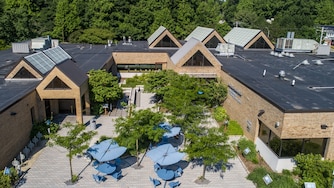A paramedic arrives on the scene of an overdose emergency. The first responder provides life-saving care and transports the individual to the hospital.
But their role typically ends there, and their potential to address the bigger picture of overdose prevention, long-term recovery and breaking cycles of addiction remains untapped.
Baltimore County joined a growing number of jurisdictions around the country trying to change that last year when it launched a pilot Quick Response Team, enlisting trained paramedics to connect overdose survivors to treatment, peer support and harm reduction tools.
The initiative empowers paramedics to transport individuals struggling with addiction not just to hospitals but to treatment centers. In its first year, the Quick Response Team served 134 residents, primarily in southeast communities like Dundalk and Essex and in southwest communities such as Arbutus and Lansdowne.
New legislation before the County Council seeks to release more than $255,000 in state funds to hire additional staff and expand the program from two to five days a week.
Quick Response Teams are “an emerging best practice” in the overdose crisis, according to Baltimore County emergency medical services Capt. Amanda Wensel.
Read More
They aim to reduce the care burden on emergency departments, where county residents are treated for nonfatal opioid overdoses more than 1,500 times a year, according to state data. And they provide an alternative for overdose survivors who are reluctant to receive treatment in a hospital, fearing painful withdrawal, poor care or stigma.
The county’s Quick Response Team “has accomplished what we’ve what we’ve set out to do,” Wensel said. “We’ve had some really meaningful interactions. We’ve had people that have actually burst into tears when our team has arrived because they’re just so grateful to have someone that is understanding and comes without stigma and open arms.”
The council will discuss the proposal at a Feb. 25 work session, with a final reading and vote set for the March 3 meeting.
Over the last decade, the overdose crisis has killed more than 300 people a year in Baltimore County. As part of its response, the county established its initial Quick Response Team in January 2024 with grant funding from the Centers for Disease Control and Prevention, following the lead of similar programs that have emerged throughout the country. Cecil and Frederick counties, along with Baltimore City, also have their own Quick Response Teams.
In Baltimore County, the initiative partners paramedics with a peer recovery specialist from its health department who brings personal experience with addiction. Together, they provide outreach services to overdose survivors and their families, either during the emergency or days later.
The paramedic also can offer emergency care to reverse the overdose, while the peer can help guide the individual toward treatment.
“People with lived experience really are the key to this,” Wensel said. “It’s very easy for someone to say, ‘You need to get help,’ but unless you’ve lived that life and walked in their shoes, it just doesn’t come across the same to someone that’s in active substance use.”
The program also aims to reduce harm and prevent future overdoses by distributing naloxone, fentanyl test strips and sterile needles.
“We know that once you’ve overdosed once, you’re at a higher risk to do it again,” Wensel said.
The bill seeks to use the state’s Opioid Restitution Fund to pay for three additional staff members and a sign language video interpreter for the Quick Response Team. The fund has collected over $200 million through opioid-related legal settlements, about a quarter of which has been distributed to local jurisdictions. The money is required to be used for opioid recovery, treatment and education efforts.
If the council approves the funds, the fire department estimates the Quick Response Team will be able to serve an additional 600 residents over the next two years.




Comments
Welcome to The Banner's subscriber-only commenting community. Please review our community guidelines.